Almost 21 years after the original release of Rockstar Games’ Grand Theft Auto: Vice City, GTA’s most stylish entry, players are still longing for a return to that most iconic location, that alt-reality take on a 1980s Miami. Why are we still so fascinated by a setting that, by all accounts, is just a romanticized version of the ‘80s criminal world that so many works have been doing for decades now?
It’s hard to deny ‘80s nostalgia keeps printing money – Stranger Things will probably go out with viewership numbers high enough to kickstart several spinoffs. However, there’s been a rising sentiment among some moviegoers, TV fanatics, and gamers that maybe we should pump the brakes a bit or at least reconsider how we approach a decade that was anything but glowing, despite the “stress-free” illusion pushed by pop culture.
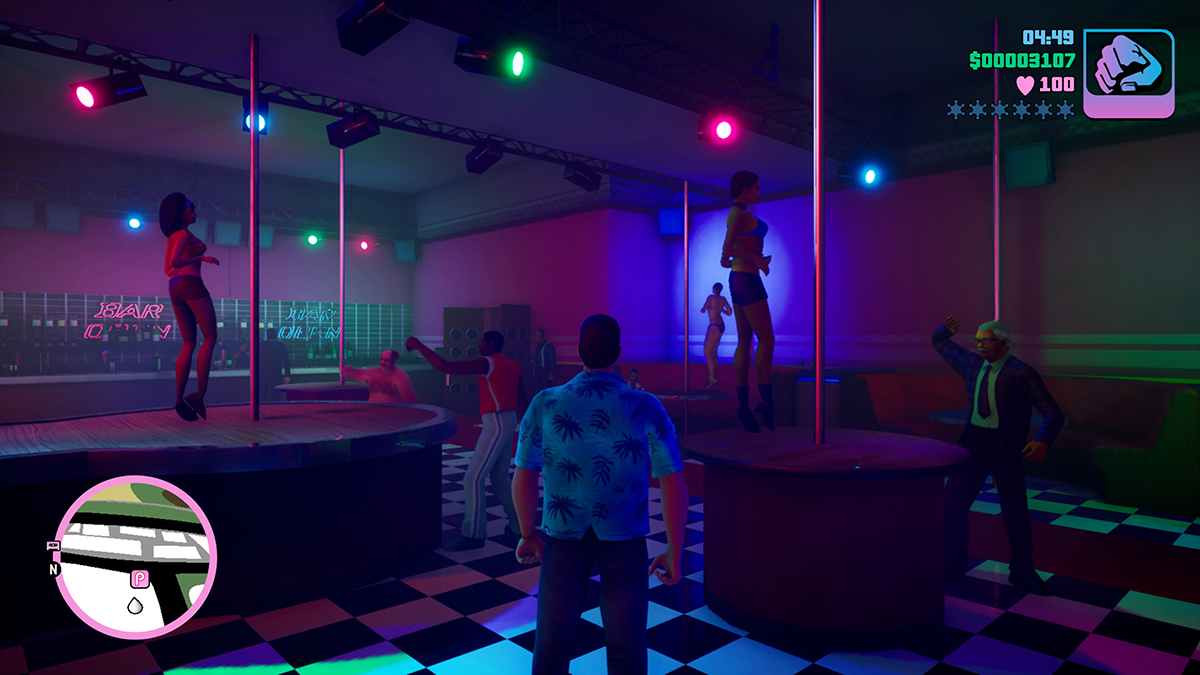
Screenshot by The Escapist
When it comes to Rockstar Games’ second 3D open-world hit, this raw nostalgic power has prevented it from aging in many players’ eyes. While many contemporaries are now regarded as borderline unplayable, the PS2-era GTA titles retain a protective aura that appears to be produced by their vibes first and everything else second. In fact, when the infamous Grand Theft Auto: The Trilogy – The Definitive Edition dropped in late 2021, most players jumped straight into Vice City before even paying attention to the much larger and refined San Andreas.
Coming into the Definitive Edition almost a year later, when initial tech woes had been mostly fixed up, I was one of those players who wanted to cruise through the colorful streets of Vice City first. There’s something sincerely enchanting about the location, and it mainly has to do with the laid-back atmosphere that covers pretty much every street and NPC. This is especially funny when we consider that the actual game is as hostile as a game world gets, with local gangs shooting each other up all the time around certain spots and citizens representing the very worst of North American society with mean barks and vapid chatter.
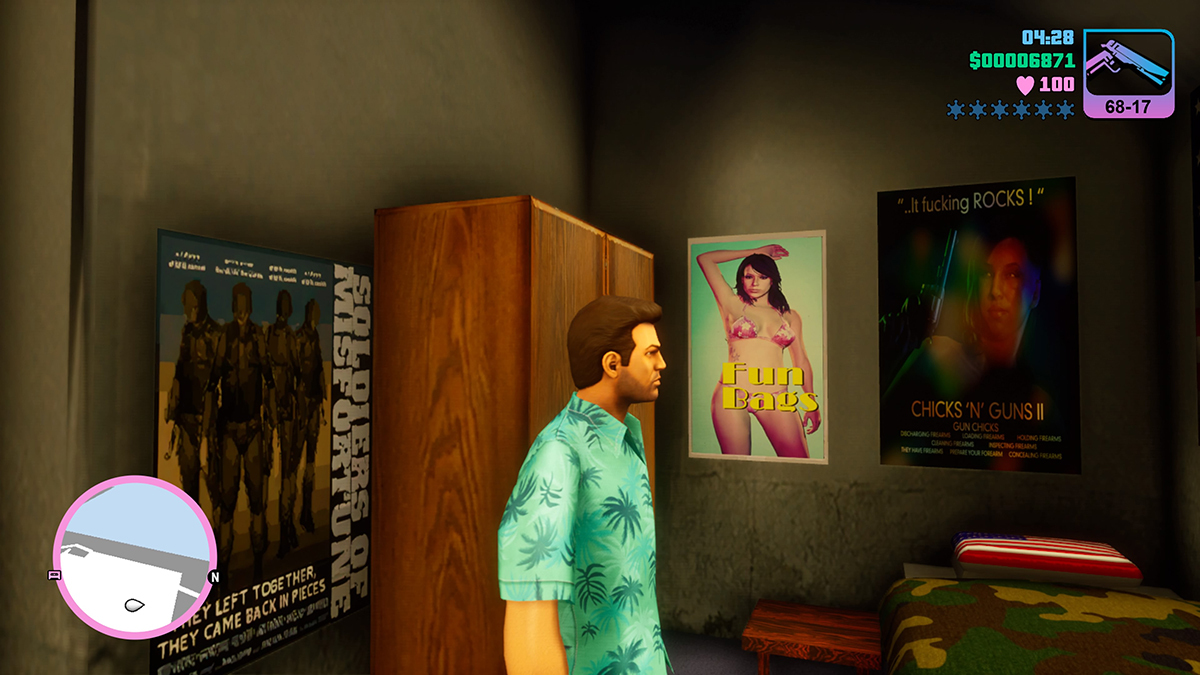
Screenshot by The Escapist
You may be quick to point out that everything I’ve just said applies to the entirety of Grand Theft Auto, and that’s partially true. Rockstar North (a British studio) has never been nice to the United States with its games, and the juxtaposition of the country’s ugly underbelly and its major cultural achievements — exported worldwide over the decades — is essentially the sauce of the entire series. But there’s something special about Vice City, starting with a main character that’s a far cry from the troubled individuals we’d meet later in the saga.
The thing about Tommy Vercetti, excellently voiced by the late Ray Liotta, is that he’s never presented as a nice guy gone wrong. His backstory certainly suggests such events, but all we have in the actual game is a criminal on the rise that’s been bossed around for far too long. Yes, there are much bigger jerks in the story, but Vercetti ain’t a nice person either. After GTA3’s silent protagonist, designed that way because of time constraints and “to aid people identifying with him,” the series’s first voiced avatar quickly establishes himself as an amoral butcher lusting for power and money too.
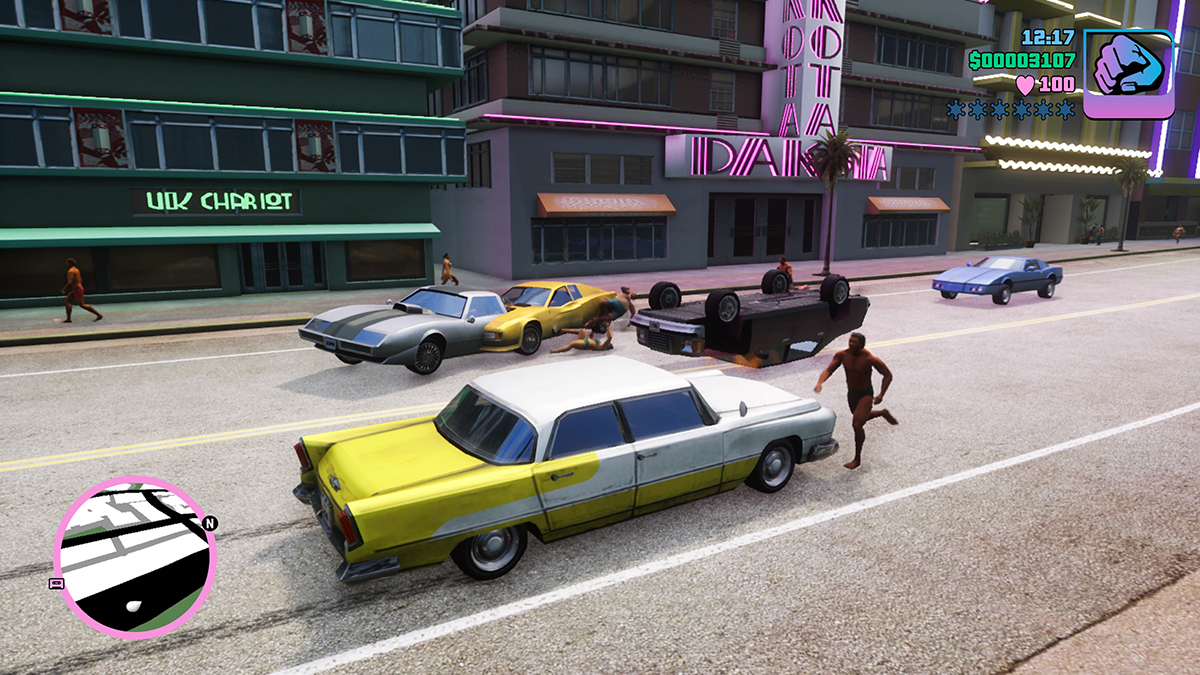
Screenshot by The Escapist
There’s no family to protect or a personal vendetta that goes beyond “I’ve been fucked over by the mafia,” and that’s fine. Tommy Vercetti is a man of ambition, much like Tony Montana in Scarface, the most obvious influence for the game. Vercetti finds a much happier on-screen ending though, something that feels kind of perfect when you consider the trick performed by Rockstar, which was to paint the nicest-looking, most nostalgic picture possible of a period defined by the rampant violence spawned by the rise of hard drugs on the American streets.
Again, the same could be said about every other GTA setting ever, yet the ‘80s already were infatuated with themselves long before the nostalgia we all know and love came knocking on the door. Fast-forward to the post-9/11 world, and it made sense to return to a “prettier” image of modern society. The jump to the ‘90s featured in San Andreas would only reinforce the idea that decade largely felt like a worn-down extension of the 1980s, presenting a country more conscious of what drugs and senseless gang wars had taken away from them for years.
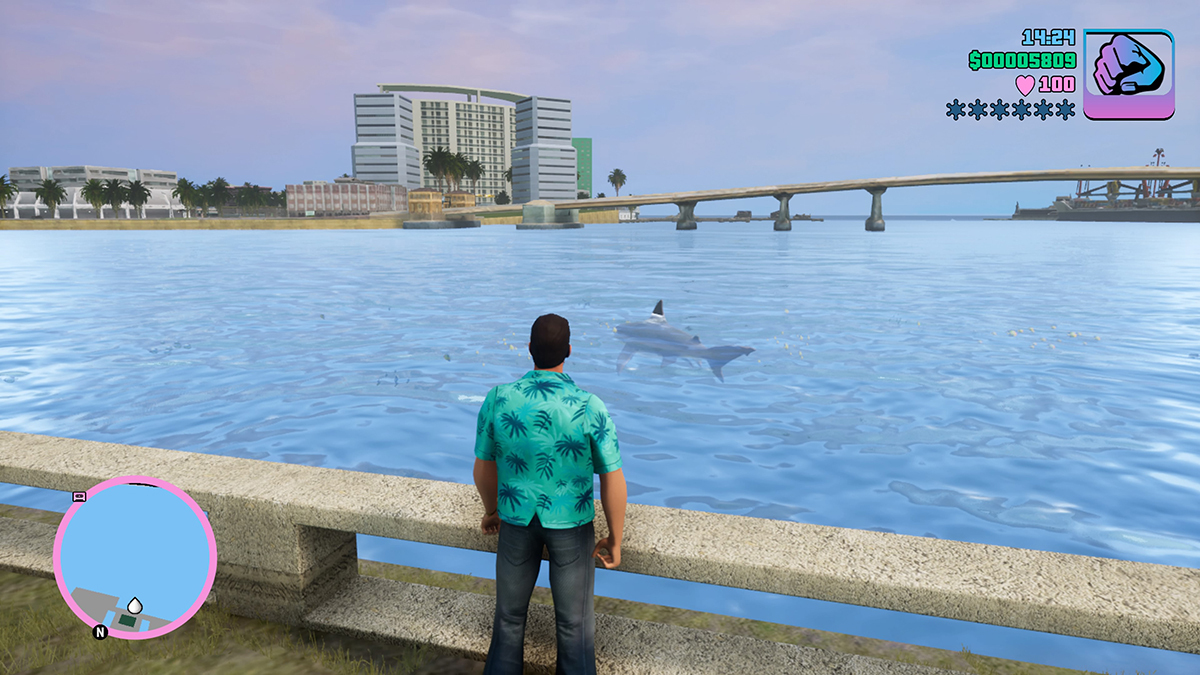
Screenshot by The Escapist
Perhaps the most fascinating thing about replaying GTA: Vice City in 2023 is that we’re hopelessly nostalgic about a video game whose makers were already nostalgic about the ‘80s back in 2002. It’s hard to understand the current — but dwindling — fascination with that era without at least acknowledging this game’s massive influence on this century’s pop culture. Moreover, Vice City remains the best example of the rise to power of the open-world structure kickstarted a year earlier by Grand Theft Auto III. At this point, it holds more value as a piece of cultural history than as an actually fun video game. I enjoyed my time playing through it once again though.
At the end of the day, we keep returning to 1986 Vice City to recapture a warm and fuzzy feeling that comes from a studio’s own nostalgic take on a period and location that was anything but welcoming once you dived below the rosy surface. Many of us didn’t get to experience that era ourselves, but we’ve heard the stories, both good and bad. And it’s important to realize the power good fiction has over our individual — and collective — perception of the past. Vice City may be both the perfect pre-bloat sandbox escapade and a time capsule within a time capsule.

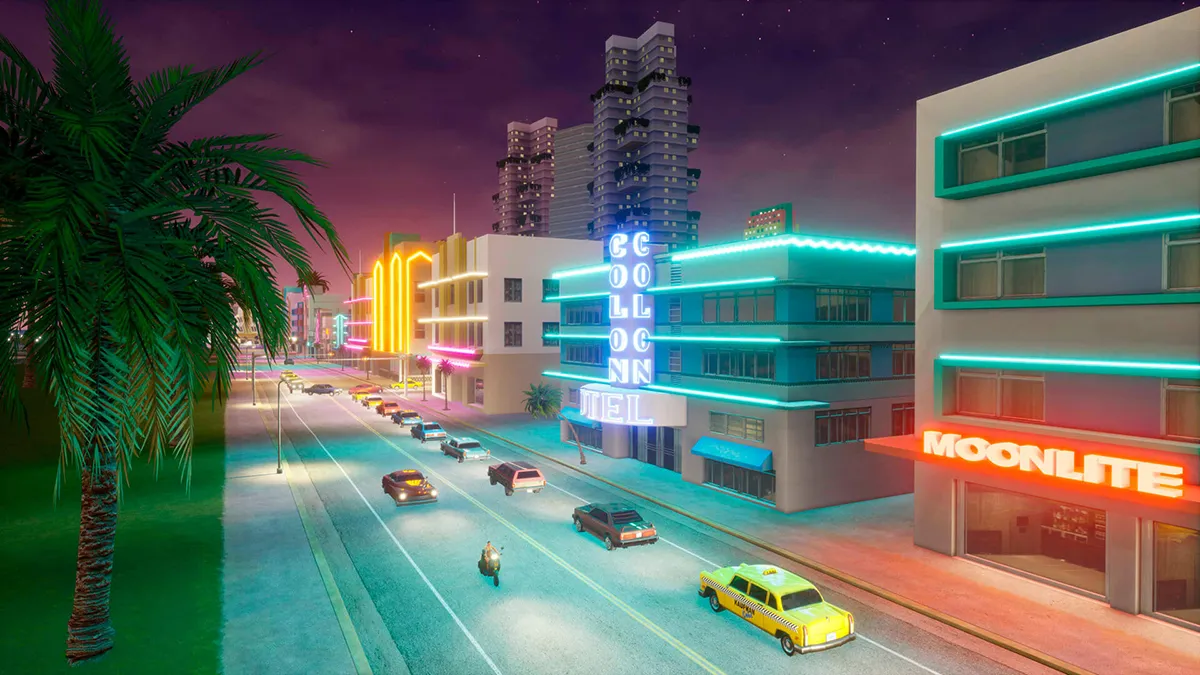




Published: May 23, 2023 12:00 pm